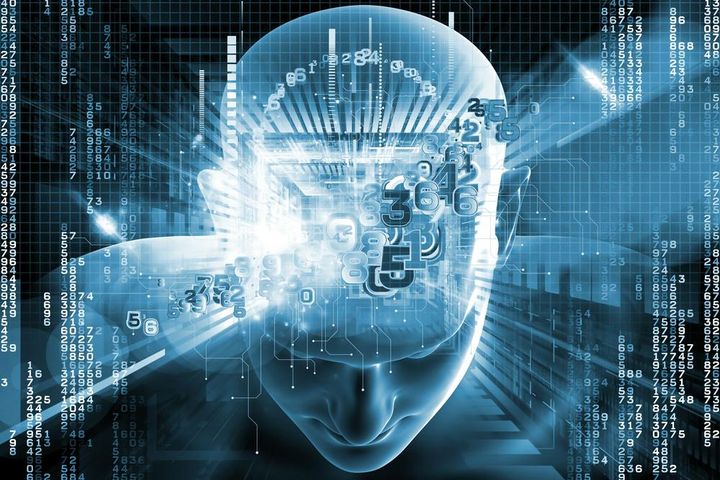
The Next Quantum Leap: Artificial Intelligence
With Artificial Intelligence (AI) now being seen as an essential tool in various sectors, it is important for our generation to incorporate innovative dynamic learning needs into our global education system. But when cutting-edge sectors evolve at lightning pace, it is not always possible for traditional sectors to change at the same speed.
My company, Gravity4, has been intensively exploring Deep Learning in our development lab to advance our understanding with the ad technology platforms. Recently, I did a mentorship series with the youth in a struggling education system. The fascination of all great things possible, through the cutting edge revolution of AI, brought much energy in the room. Sure AI will enable us to operate smart cars in smart cities, empower us to predict when a particular disease may affect a region or individual, and even predict an election results - with precision!
A bit too much of a sci-fi for you? Well, much of the above is already being tested with machines learning, as it does the heavy computation and analysis to form the best probability for an event. If we look at the recent ‘emerging technologies’, the list would include: self-driving cars, biometrics, chatbots, drones, 3D printing, and VR, just to name but a few.
As with all-things-exciting, the subject sometimes leads to open invitation for the ‘hype’. Perhaps the entrepreneurs all around know the ‘next biggest breakthrough’ facing our human evolution is, “The Artificial Intelligence.” So, let’s work on dispelling the myth, understand what “is” possible today, and ways in which to prepare for this revolution.
What Is Machine Learning?
Physicists define Machine Learning as “a theory of a field that incorporates the statistical, probabilistic, computer science and complex algorithms which result from learning interactively from data and hidden insights, which can then be used to produce intelligent applications.”
Ok. Let me break this down into simple terms: Machine Learning enables computers to learn without being explicitly programmed. As the inflow of data changes, the computer detects a change in data patterns, and modifies itself in order to accommodate that change. While the underlying process is similar to data mining, Machine Learning does not extract data for human comprehension. It does it automatically in order to respond to pattern change.
How does this affect us? The days when we need to hire individuals who are familiar with basic statistical and data modeling interpretation - in excel - will be soon long gone. In the case of Machine Learning, we now need individuals with a solid understanding in Linear Algebra, Probability Theory and Statistics, Multivariate Calculus and Computational Optimizations.
To that end, in our schools, Science, Technology, Engineering and Mathematics (STEM), need to have a strong focus NOW – possibly one which is heavily weighted in the core curriculum. As industry and technology continue to evolve, it is said that Linear Algebra may very well be the basic requirement to begin understand Machine Learning, simply because it is the necessary foundation. Furthermore, a strong understanding of Vector Spaces and Norms are crucial to formulate interpretations and understand the optimization methods used in ML.
If that is Machine Learning, then what is Deep Learning and Artificial Intelligence?
Good question. Let us dissect this over a time lapse.
Artificial Intelligence, Machine Learning and Deep Learning should be seen as progressive phenomenon over a period. AI first came about in at the Dartmouth Conferences in 1956. Fast-forward to now, and we see what started out as a few weeks of brainstorming sessions among mathematicians and scientists, has now pegged to become the next major human evolution.
Much of AI has been led by the ‘Big Data’ movement and Graphics Processing Units (GPUs) that have transformed data processing to make it more efficient with a faster processing time. Machine Learning came about in the 1980s, and this can be viewed as an approach to AI. Its basic premise relies on using algorithms to analyze data, gather learning, and then make a prediction. Rather than hand coding or scripting to achieve a task, a machine is trained to learn how to perform it by feeding it with a large amount of data and algorithms. Machine Learning Algorithms employ decision tree learning, clustering, and Bayesian Networks, and more.
The breakthrough in Deep Learning came about as recently as 2010, and was derived from Artificial Neural Networks. Scientists looked at the way our brains function, and used it as the inspiration to understand Neural Networks. Much of this exploration is still in the ‘inspirational phase,’ as we have yet to figure out the complexity of each neuron’s connection within the physical data set. Nonetheless, it seems possible that Deep Learning breaks down tasks, which enable machine assists.
In Silicon Valley, we are seeing Deep Learning being called upon to enhance customer experience through intent based shopping, ad targeting, driverless cars, and even healthcare. This is a major research area of focus for my company, Gravity4 - a marketing cloud platform.
Test-ability
There are many test cases for Deep Learning. I am familiar with this in the advertising technology sector. There are tech giants exploring this area utilizing social, image, and natural language processing capabilities. Gravity4, is testing Deep Learning within a controlled domain in order to refine the predictability of a consumer’s potential purchase.
The focus is look at the sheer volume of data of the user’s past surfing behavior, their transactions, ad viewability, click-ability of ads, their social engagement, sharing habits and plethora of other correlating events.
The meaningful machine learning algorithms enable us to create nonlinear relationships between independent and dependent variables within a pool of data. Once we know with certainty the value attribution of the independent variables, we can then make predictions about the dependent variable. For example, whether a user has a greater brand infinity to Tesla S vs. Tesla X. Even precisely speaking, be able to predict the favorite color.
Machine Learning enhance predictive modeling. Many companies still in the technology space use data relationship and prediction made using linear models. These models definitely have an advantage regarding their simplicity of analyzing the data set, but do lack the depth of perception on the variable relationships which machine learning algorithms provide us.
As an industry, we are still struggling to find the talent of data analysts who can interpret this data in accuracy. For this, we need individuals with impeccable mathematical intuition and frameworks in order to be assured of accurate results.
Prepare Yourself to Lead this Change
Personally, I do not believe that education has to stem from attaining a 4 year college or university degree, although I strongly urge people to attend college, as it helps define social culture among young minds. Institutional learning, however, is not the only way to acquire this knowledge. In the current realm of technology disruption, education has (and will continue to) experience this change. There are a number of online courses, some of which are offered free of charge, made available by the renowned universities.
To get your feet wet, you do NOT need a ton of math to start your journey. Enroll in the free courses online, and build your ground base. Should your passion surge, then continue to invest your time (as education for many of these courses is still free or much cheaper than traditional institutions). Spend time learning about Deep Learning and Artificial Intelligence. You will need a strong base in order to prepare yourself to build ‘intelligent products’ - and lead this evolutionary phase of the next discovery.
Sources: Free Educational
- Coursera (It has a partnership with Stanford University (co-founder/Andrew Ng) and offers a Machine Learning curriculum
- Udacity
- Khan’s Academy (I have been a regular user of this resource)
Listed above are just the three that I use. There are slew of free online resources available, as MOOCs, and I urge students to explore these resources and self-teaching courses to learn the basics.
When I was growing up, such free resources were not available. Take advantage and enjoy the changing times. Enroll yourself in as many online MOOCs that suit your passion and study these concepts at a self-paced mode. Do so on the weekend, evening, or as your time permits – but if you have the drive, passion and desire to lead the next wave of digital innovation, then invest additional time in your own growth.
If we wait for government institutions to change the education curriculum, I fear some nations will be left behind in the race (and perhaps their chance) to mark the next big evolutionary change of our time led by Artificial Intelligence. Regions like India and China have been on the sidelines of the past technology discovery. However, now Asia has the largest engineering talent pool and the growing drive for the next big entrepreneurial adventure.
The Future Awaits
Artificial Intelligence is the wave of the future. Rather than becoming causality in this race, I strongly recommend our younger generation prepare for it as early as possible. I also implore our government’s educational leaders to revise our school curriculum. In order to meet the needs of the future, we need to empower the young minds of today – and this has to be done now!
---------------------------
Click here to read the next blog by Gurbaksh on The Last Lecture by Randy Pausch.
Read more blogs by Gurbaksh Chahal.
